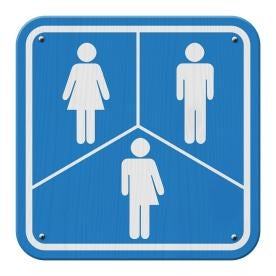We have seen a veritable maelstrom of controversy surrounding transgender rights and other gender identity issues in the past year, and especially in the last several weeks, with everyone weighing in on the subject from Donald Trump to President Obama. While in some ways it is difficult to predict precisely how federal, state and local laws will all shake out on the issue – particularly in the context of employer/employee relations – the New York City Commission on Human Rights has taken this potential problem of uncertainty head-on in recently published enforcement guidance on gender identity discrimination that is so comprehensive in scope that it seems destined to serve as a model for other jurisdictions. Therefore, all employers, whether or not they are in New York City, can benefit from reviewing the guidance – including the eight categories of violations identified by the Commission – to better understand how to safeguard against gender-identity based discrimination
The first aim of the Commission’s guidance, which builds on long-standing protections against transgender discrimination found New York City’s Human Rights Law, is to redefine the vernacular common to gender identity discussions by providing a “new” vocabulary for the discussion. For example, the Commission recasts “gender discrimination” in easy-to-understand terms – i.e. it is treating someone “less well than others on account of gender.” The Commission also sets forth revamped definitions for other familiar terms such as “gender” (an individual’s actual or perceived sex, whether or not it is different from that traditionally associated with the sex assigned at birth) and “sex” (a combination of bodily characteristics including chromosomes, hormones, internal and external reproductive organs, secondary sex characteristics, and gender identity”). The Commission also identifies and describes some less familiar terms, such as “cisgender” (where one’s self-identity conforms with one’s biological sex) and “inter-sex” (used to refer to a person “whose reproductive or sexual anatomy and/or chromosomal pattern does not fit typical definitions of male or female”).
The second goal of the guidance is to provide concrete examples of violations – both on a general and a specific level – and practical suggestions for avoiding such transgressions. To this end, the Commission identifies the following eight categories of violations and provides particularized examples of each type of violation:
-
Failing to use an individual’s preferred name or pronoun: e.g. calling a transgender woman by her given and not her preferred name unless she provides proof of legal name change
-
Refusing to allow individuals to use single-sex facilities and programs consistent with their gender: e.g. restricting a transgender man to using a restroom consistent with his sex assigned at birth
-
Sex stereotyping: e.g. failing to promote a female employee whose behavior does not conform with gender norms
-
Imposing different uniforms/grooming standards based on sex or gender: e.g. requiring employees of one gender to wear a uniform specific to that gender
-
Providing employee benefits that discriminate based on gender: e.g. offering health benefits that categorically exclude from coverage or limit coverage for health services related to gender transition
-
Considering gender when evaluating requests for accommodations: e.g. requesting medical documentation to verify leave time from transgender employees but not cisgender employees
-
Engaging in discriminatory harassment
-
Engaging in retaliation
The Commission’s guidance contains many other detailed examples of what these eight violations might look like in reality, so employers in New York City and beyond would be wise to review the full guidance and consider how their employee policies stack up – particularly if the New York City guidance begins to influence how other state and local governments address this topic. Implementing certain simple practices – such as asking all employees to provide their preferred gender pronoun and allowing them to self-identify their name and gender – can go a long way to safeguarding against gender based discrimination.




 i
i


